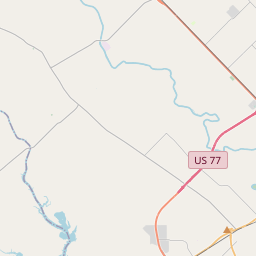Hauschild Opera House
Historical marker location:






German native George Herman Hauschild (1839-1911) came to Victoria shortly after his marriage to Adele Luder in 1866. A prominent pioneer businessman, Hauschild opened an opera house here in 1894. The theatre, which occupied the top two floors, featured Vaudeville shows, plays, and silent movies. The lower floor of the building was occupied by Hauschild's Music Store, established in 1891 by H.J. Hauschild (b. 1870), who succeeded his father as manager of the opera house. The theatre closed during the 1930s due to the increasing popularity of "talking pictures".
1984
As one of the most visible programs of the Texas Historical Commission (THC), historical markers commemorate diverse topics in Texas history, including: the history and architecture of houses, commercial and public buildings, religious congregations, and military sites; events that changed the course of local and state history; and individuals who have made lasting contributions to the state, community organizations, and businesses.
The world's first rodeo was held in Pecos, Texas in 1883. The event included bronco riding, calf roping, and bull riding.
In the early 19th century, Anglo-American settlers began to move into the area, attracted by the fertile land for agriculture and the potential for ample grazing. The Mexican government encouraged colonization, and by 1834, there were around 100 families living in the region. However, tensions between the settlers and the Mexican government eventually led to the Texas Revolution in 1835.
During the Texas Revolution, Victoria became a strategic point for both the Texian and Mexican armies. The Battle of Guadalupe River occurred here in 1835, where the Texian rebels under the command of George Collingsworth captured the Mexican garrison without bloodshed. The town of Victoria formally became the capital of the Republic of Texas in 1839 before it was moved to Houston and later Austin.
In the late 19th and early 20th centuries, Victoria County experienced significant growth and development. The railroad arrived in the late 1800s, leading to increased trade and the expansion of the local economy. The discovery of oil in the early 20th century further contributed to the county's prosperity. Today, Victoria County is a thriving hub for agriculture, oil and gas production, and serves as a regional center for healthcare, education, and businesses.
Victoria County Timeline
This timeline provides a condensed summary of the historical journey of Victoria County, Texas.
- 1824 - Victoria County is established as a Municipality of Mexico
- 1836 - Texas gains independence from Mexico
- 1837 - Victoria County is created as an original county of the Republic of Texas
- 1852 - The town of Victoria becomes the county seat
- 1860 - Population of Victoria County reaches 2,305
- 1874 - The Texas Mexican Railway expands into Victoria County, stimulating economic growth
- 1899 - Oil is discovered in the county, leading to a boom in the petroleum industry
- 1924 - The DuPont Company establishes a plant in Victoria County, contributing to industrial development
- 1930 - Population of Victoria County exceeds 30,000
- 1952 - The O'Connor-Proctor Building, the first air-conditioned building in town, is constructed
- 1960 - Victoria County Courthouse is added to the National Register of Historic Places
- 2008 - Hurricane Ike causes extensive damage to Victoria County
- 2019 - Victoria County celebrates its 182nd anniversary